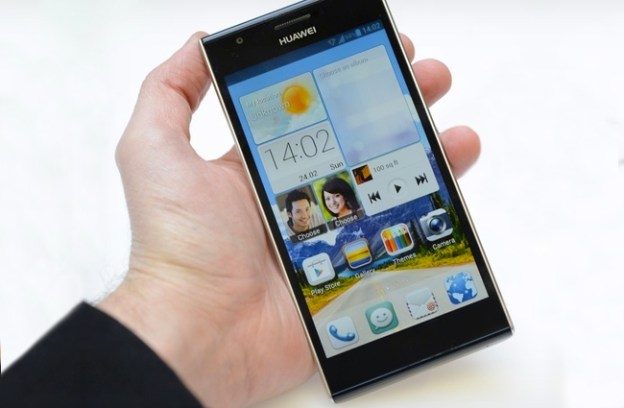
After making a nice splash at CES 2013, Chinese phone manufacturer Huawei set the tone for Mobile World Congress 2013 in Barcelona with the first press conference of the event. The company wasted no time making news by showing off its new flagship phone, the much-anticipated Ascend P2.
The new handset comes equipped with a 4.7-inch screen with a resolution of 1280 x 720. Many will likely be surprised by the lack of 1080p display, especially given this phone is expected to be the leader of Huawei’s lineup, but the company seems to believe this is more than enough. It reaches 315 pixels per inch and the resolution is “more than your eye can identify.” The screen will be capable of viewing full HD video, according to Huawei CEO Richard Yu and has a a viewing angle of 85 degrees. It also features second generation Corning Gorilla Glass protecting it.
That display, regardless of its resolution, will show off a modified version of Android 4.1.2 Jelly Bean. The skinned version of the operating system is Huawei’s Emotion UI. Because Android itself is “too complicated” for many consumers, Huawei applied its skin to simplify things. UniHome, the new home screen, is designed to cut away clutter (though it doesn’t look at less cluttered from our estimation). A themes manager makes customization possible, and MeWidget allows users to make personal settings adjustments. A feature called EZ Folder makes it easy (get it?) to group similar apps together. If you prefer to tweak your Android configuration how you see fit, the Ascend P2 will still have tools like a permission manager, startup manager, traffic manager, and power manager. Smart Reading was perhaps the most interesting feature announced, allowing users to select a word, look it up online, and translate it or use it as a search term to find out more about it.
Powering the Ascend P2 will be a 1.5GHz quad-core processor. Other internals include 1GB of RAM and 16GB of storage. Yu claims the device to be “the world’s fastest smartphone,” achieving 150 megabits per second using LTE Cat-4 generation networking. This tops out ahead of the iPhone 5’s 100Mbps.
Keeping the phone running is a 2420mAh battery. It will benefit from some proprietary technology called Quick Power Control, which cuts battery consumption by 10 percent, and ADRX, which can save 20 percent of battery life by modifying networking. The phone will be kept charged with 2-amp charging, meaning it will take less time to achieve a full charge.
The real draw on the spec sheet for this phone, though, is the 13 megapixel rear-facing camera. Though it’s not the first to reach that benchmark, it’s still a rather impressive feature to call upon. It’s also enough for Huawei to make the claim “best quality camera in the world,” making the Ascend P2 very difficult to compete with based solely on rhetoric. Images will be snapped by double-clicking the power button. The camera will have facial recognition features and HDR technology. Opposite that is a 1.2 megapixel front-facing camera.
As learned during the Huawei press conference, the “P” in the Ascend P2 stands for fashion. It’s part of a coded system that includes “Y” for affordability, “G” for value, and “D” for technology. The Ascend P2 shows off its fashionability with an slim and slick shape and a lightweight feel. It measures in at just 8.4mm thick.
The Ascend P2 will have a global release later in 2013–a pleasant surprise after the China-centric launches announced at CES. Huawei will be sending it off in Q2 to Europe–specifically in June on French carrier Orange–with a price tag at $525. It will be available in the United States via online sales only, not through carriers.
Editors' Recommendations
- Huawei P50 Pocket rivals Z Flip 3 in design, but not price
- Huawei’s P50 Pro launches with 200x camera zoom, but leaves out 5G
- Huawei Mate X2’s outstanding hardware stuns, but there is a shocking downside
- Huawei P40 Pro vs. Huawei P30 Pro: Which is more Pro?
- The most common Huawei P20 Pro problems, and how to fix them



